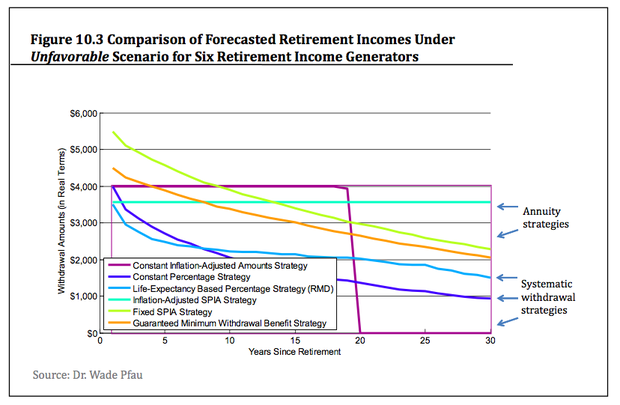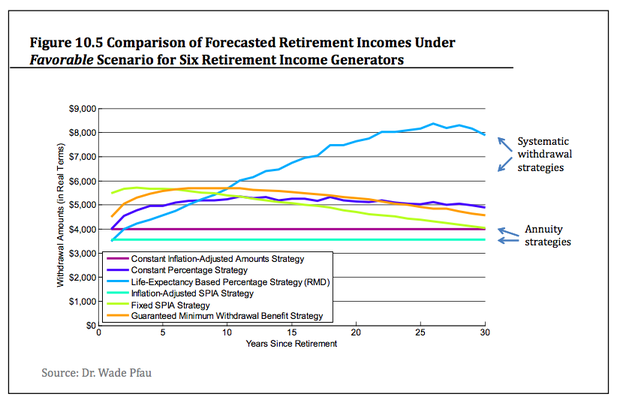Choose the best ways to generate retirement income
(MoneyWatch) In trying to figure out how to generate retirement income from your savings, it isn't enough to simply consider your projected annual income under current economic conditions. You also need to consider how different retirement income generators, or RIGs, will perform in good times and bad (For more on this subject, also see my previous post).
- How much retirement income will you receive?
- 3 ways to turn your IRA and 401(k) into a lifetime retirement paycheck
- Diversify the sources of your retirement income
- Retirement planning in an uncertain world
Generals and political leaders have learned the hard way that it's dangerous to rely on outcomes that are merely a "best estimate" of the future. Instead, they often rely on "scenario planning," where you see if you can survive worst-case possibilities. It also helps to see what might happen if the future turns out to be better than your best estimate.
You can use scenario planning to choose the RIGs that might best fit your goals and circumstances. To help you determine how the various RIGs will perform if future economic conditions turn out to be worse than expected, the graph below shows projections of real retirement income (adjusted for inflation) for a 65-year-old couple with $100,000 in retirement savings (For the technically inclined, the favorable scenario is the 10th percentile result.)
Here's an analysis of the results:
- The most dramatic result is that the systematic withdrawals-constant amount RIG exhausts a retiree's retirement savings at 20 years and the projected retirement income drops to zero. This RIG is a pure application of the "four percent" rule.
- The inflation-adjusted annuity, followed by the immediate fixed income annuity, provides the highest amount of income at 30 years. The reason is that the amounts of retirement income generated by these two annuities aren't impacted by investment performance.
- Guaranteed products -- annuities -- provide higher retirement income under unfavorable conditions than products that rely on investing retirement assets.
The flip side of the above analysis is to look at how the RIGs perform if future economic conditions turn out to be better than current conditions. The next graph shows projections of real retirement income (adjusted for inflation) for the same 65-year-old couple under the favorable economic scenario in the SOA/SCL report. (The favorable scenario is the 90th percentile result.)
Here's an analysis of the results:
- The highest amounts of income are produced by RIGs that invest retirement savings and determine the amount of retirement income as a percentage of invested assets.
- The lowest amounts of retirement income are produced by immediate fixed income and inflation-adjusted annuities and by systematic withdrawals-constant amount, because these methods don't adjust the amount of retirement income for investment performance.
How can you use these results to decide which RIGs you should use to generate your retirement income? One answer might come from behavioral science: Most people feel more pain from unexpected economic losses than they feel pleasure from unexpected economic gains (a phenomenon behavioral scientists call "loss aversion"). That means that you may want to place more emphasis on the unfavorable scenarios than on the favorable scenarios to make sure your income would be sufficient even during bad economic times. Since we don't know what will happen in the future, it's best to be prepared in case our best estimates turn out to be wrong.
These analyses are also an argument for diversifying your sources of retirement income. It might be smart to get some income from annuities that protect you if economic conditions are unfavorable and then other sources of income that would do well if economic conditions turn out better than expected.
Most people with modest retirement savings will need to squeeze as much income as possible from their savings; reviewing the information discussed in this post and my previous post can help them decide which retirement income generators to choose. Some people may also want to consider the amount of retirement savings that will be available during retirement under the various RIGs that they can use to fund potential legacies at death or to access for flexible funding needs.


